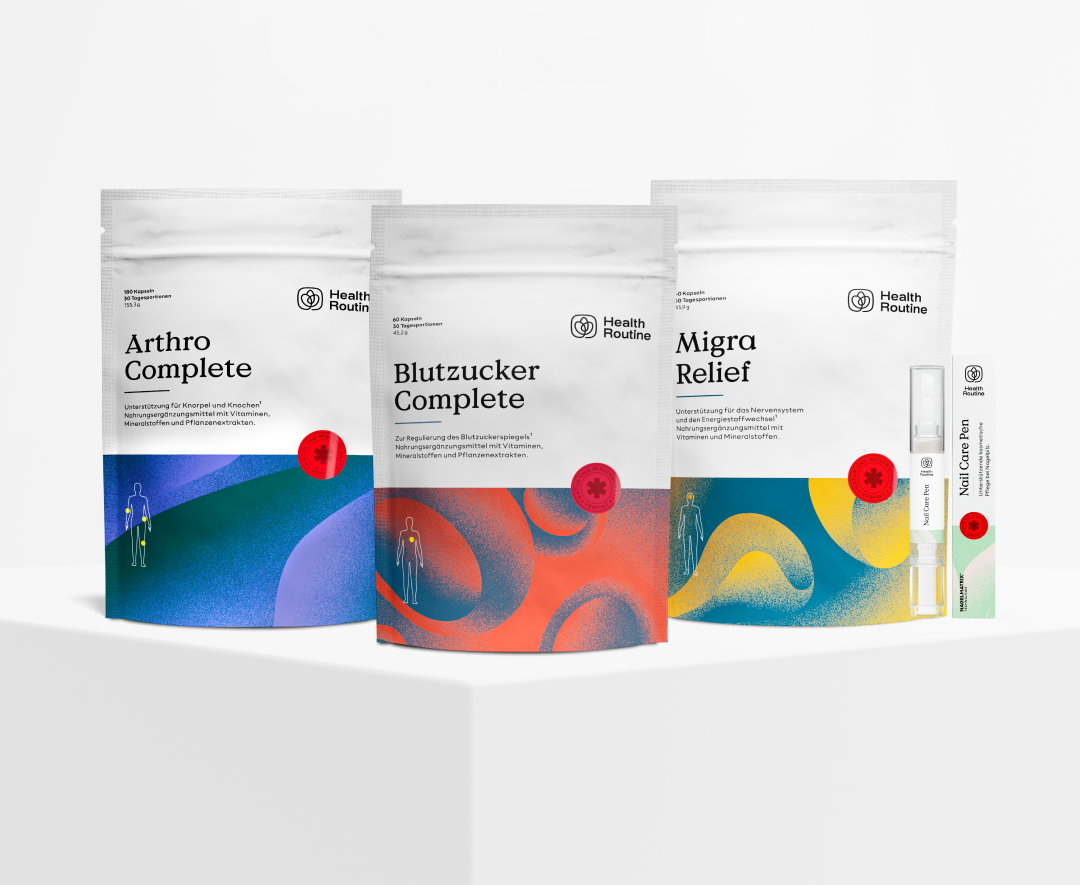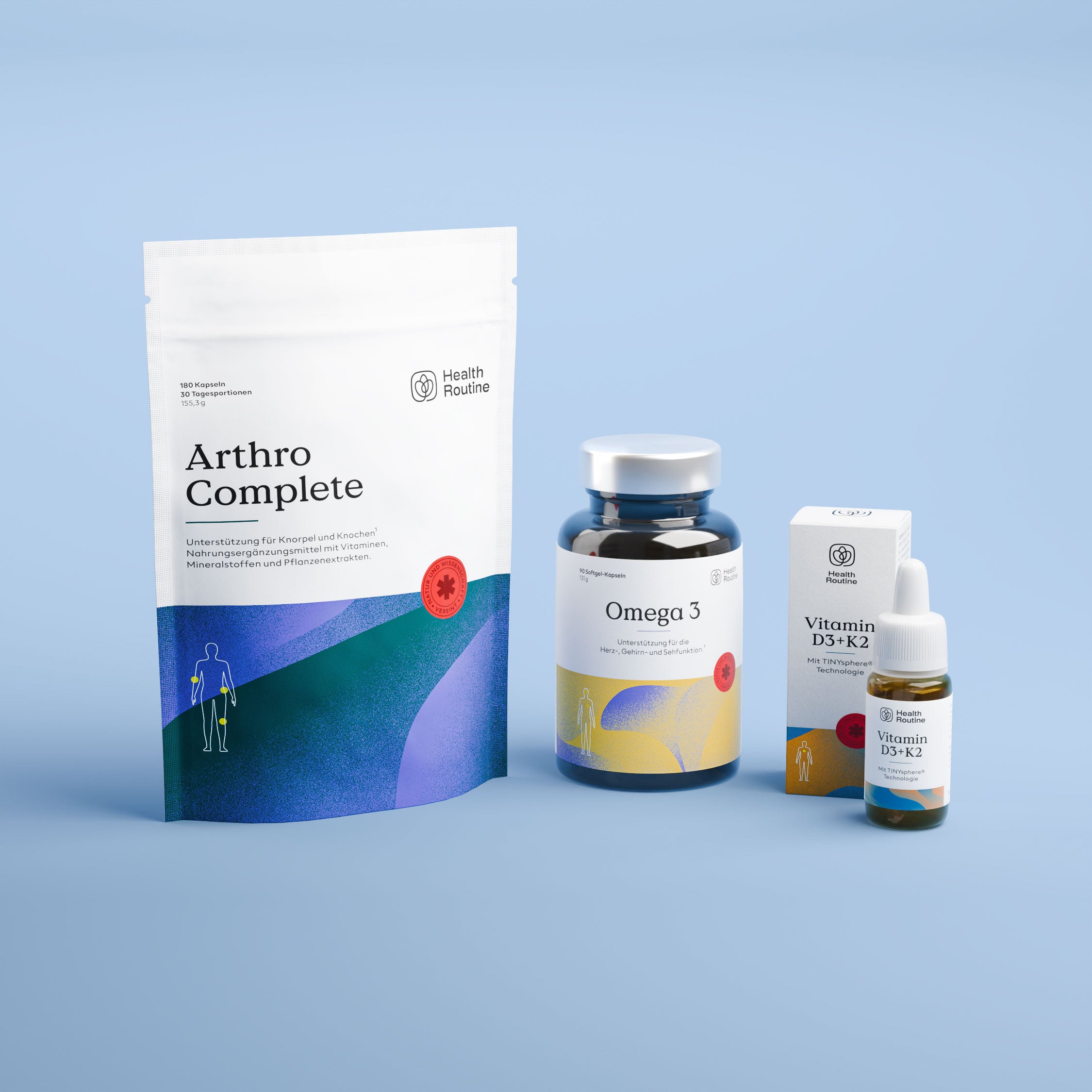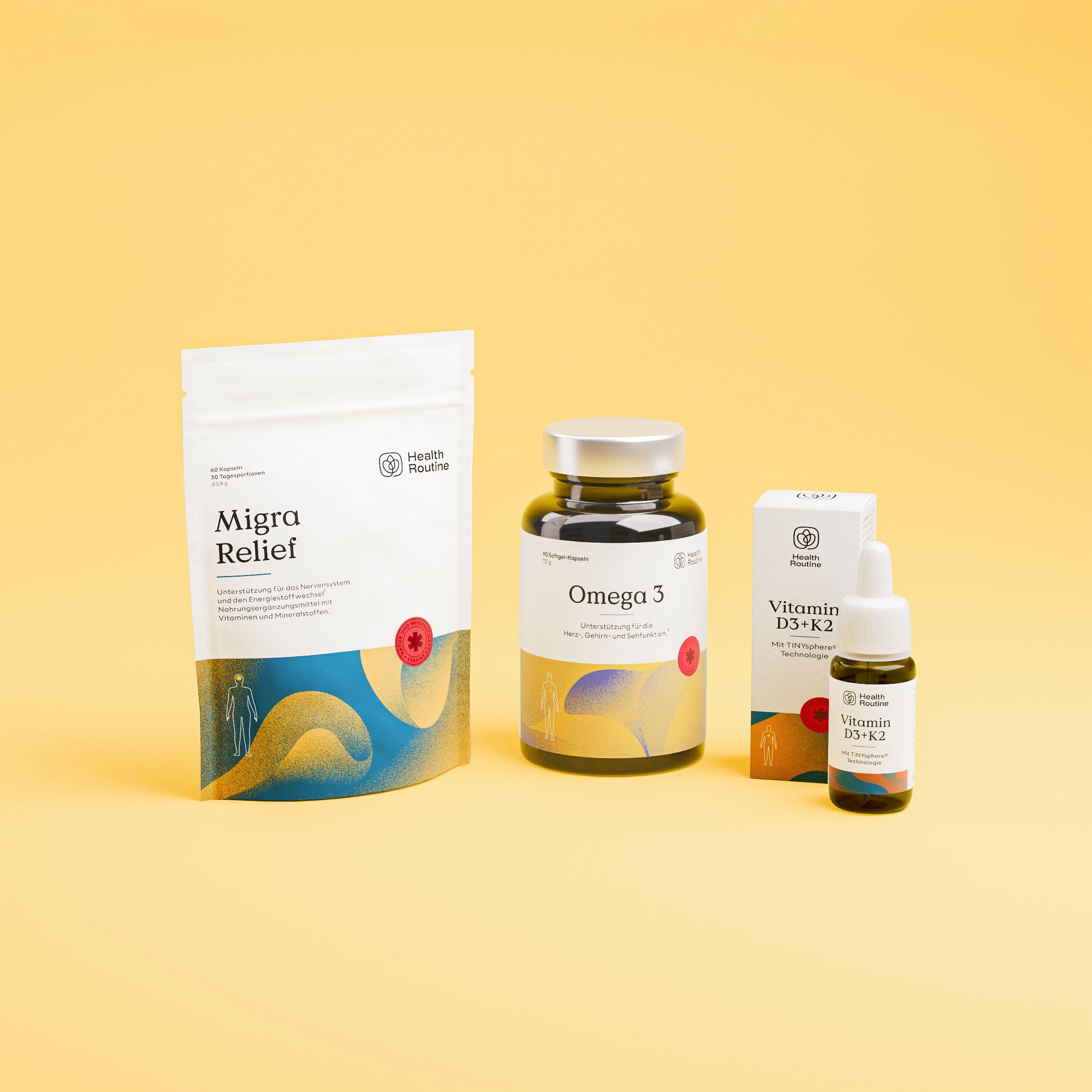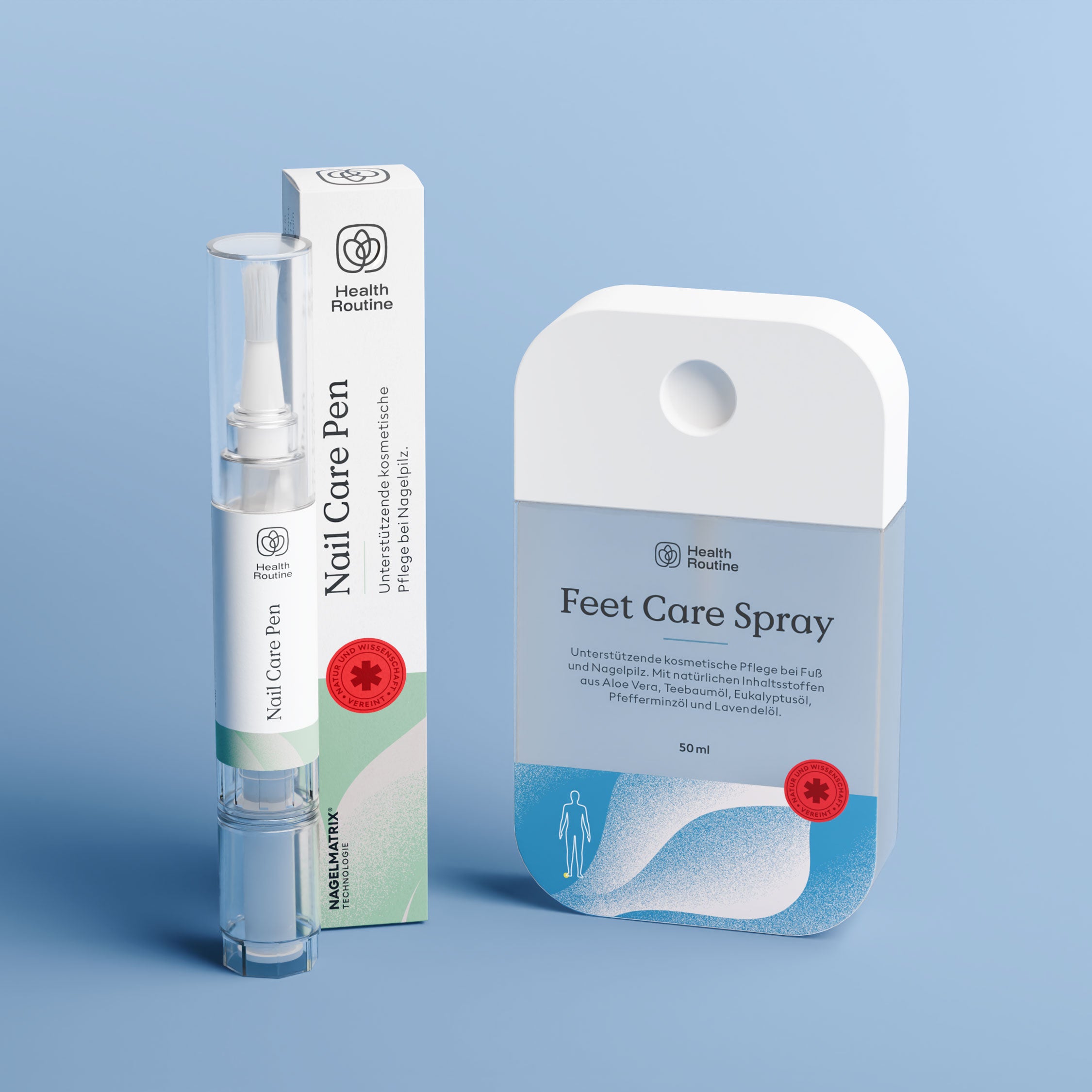The most important things at a glance
-
Learn about typical signs and possible causes of ingrown toenails.
-
Find out which measures can help provide relief.
-
Discover tips for foot and nail care to support a well-groomed foot feeling.
What is an ingrown toenail?
An ingrown toenail—medically known as an ingrown toenail —occurs when the lateral edge of the nail grows into the surrounding skin. The affected area may be sensitive to pressure, reddened, and prone to swelling. Depending on the severity, fluid or pus may also leak out.
What are the typical signs of ingrown toenails?
An ingrown toenail often causes severe pain . The edge of the nail grows into the surrounding tissue (nail fold), which becomes inflamed.
- red,
- swells
- and is characterized by throbbing or stabbing pain.
Even light skin contact such as stockings or the bedclothes can become torture.
If left untreated , disaster will take its course. So-called granulation tissue , colloquially known as "proud flesh," threatens to overgrow the nail .
Now the inflammation becomes stronger and therefore more painful . Especially if bacteria get into the wound. At this point, an ingrown toenail can be recognized by the secretion of
- Tissue fluid,
- blood
- or even detect pus.
Causes and risk factors at a glance
Ingrown toenails don't develop overnight. There are certain risk factors that contribute to the development of ingrown toenails.
If you take these into account, you can actively prevent unpleasant and painful foot problems:
- Shoes that are too tight
- Incorrectly cut toenails
- sweaty feet
- Diabetes, kidney and heart failure
- Involuted nails (hereditary nail growth form)
- Anatomical condition of the nail bed (too wide)
- Obesity
- Cancer drugs
Frequency and typical course
An ingrown toenail is not uncommon . One in five patients with foot problems is affected. This phenomenon is becoming increasingly common among people aged 50 and over, especially as mobility decreases with age.
Added to this is the natural change in nail structure . Our nails become thicker with age and are no longer as easy to trim .
The three stages distinguished by doctors
The severity of ingrown toenails is divided by doctors into three stages:
-
Stage 1: Initially, the nail has already grown laterally into the nail fold . The surrounding tissue is red, tender to pressure, and causes pain when walking.
-
Stage 2: So-called granulation tissue is already growing over the edge of the nail. It gets its name from its external appearance, with small, visible granules on the surface.
These are called "granulomas" in Latin. In many cases, this form of skin growth is oozing and festering.
- Stage 3: This phase is characterized by chronic inflammation, which can affect not only the nail fold but also the entire nail bed . It is usually accompanied by extensive overgrowth of the nail.

Health effects of ingrown toenails
If an ingrown toenail is treated early , the inflammation can usually be controlled with simple means .
However, anyone who waits too long or belongs to a high-risk group (diabetics, people with weakened immune function) should seek medical help. This also applies if stage 3 has already been reached and fever and weakness also occur.
Expert advice: If left untreated, ingrown toenails can lead to cellulitis. This form of inflammation extends into deep tissue layers and can even cause blood poisoning.
How is an ingrown toenail diagnosed?
An ingrown toenail is usually diagnosed by a doctor without further examination, as the problem is usually recognizable at first glance.
If a toenail is ingrown , those affected can usually feel and see it through redness and swelling . If you want to be on the safe side, you can also consult a professional podiatrist for a diagnosis.
How to avoid ingrown toenails
With the right know-how, ingrown toenails can be actively prevented . This includes the following components:
-
Adequate nail care: Your nails should not be cut too short. It's best to use a glass file for trimming . This is particularly gentle and effective and is perfect even for thick toenails.
If you would like to learn more about nail and foot care, we recommend our guide article “ Caring for your feet ”
-
Proper footwear: When choosing your shoes, focus primarily on functionality. While looks are obviously important, fit is always paramount in preventing any foot problems.
You can recognize suitable models by the fact that your toes have sufficient freedom of movement and the shoe is neither too tight nor too wide.
You should also always consider breathability when buying shoes, as this helps reduce excessive sweating.
-
Avoid sweaty feet : Sweating softens the skin, making it easier for nails to grow in. To counteract this natural process, our cooling and nourishing Feet Care Spray can be your ideal tool.
It refreshes your feet in a unique way thanks to its all-natural formula. The aloe vera it contains is said to have balancing properties. Furthermore, it strengthens the skin and nail flora and can contribute to normal skin function.
Treatment: What really helps?
An ingrown nail always requires appropriate treatment . This depends on the extent of the injury . If it reaches stage 3, you should definitely consult a doctor or podiatrist.
In all other cases, however, an ingrown toenail can usually be treated yourself using the following options.
Ingrown toenail: The role of foot baths in treatment
Anyone who wants to successfully treat an ingrown nail should not underestimate the role of a foot bath . A salt foot bath contributes significantly to success. This soothing foot bath optimally prepares the nail for further treatment.
Sea salt and baking soda are particularly important. Sea salt and baking soda are considered antiseptic and anti-inflammatory . Essential oils can also help relieve foot pain.
Our foot bath salt is a purely natural composition of 100% natural ingredients that have proven effective in treating athlete's foot and nail fungus. Learn how to take a salt foot bath in this article.
After soaking your toenails, the affected skin can usually be easily pushed back from the edge of the nail using a rosewood stick . You can then apply an anti-inflammatory tincture or ointment .
How effective are tampons and traction bandages?
In order to relieve the affected nail and at the same time to shield the nail edge from the adjacent tissue , tampons or traction bandages are often recommended .
- During a tamponade, the edge of the nail is lifted and a compress is inserted.
- A traction bandage consists of several adhesive bandages . As the name suggests, they are applied under tension to expose the nail edge by permanently retracting the affected skin.
Both methods should not be performed by the patient themselves , but should be performed by experienced podiatrists. Only then is the application of packing and traction bandages likely to be successful.
Nail correction braces: A professional solution for nail problems
Nail correction braces are also an option for treating ingrown toenails . They are used in podiatry to lift the nail and thus prevent further ingrown nails.
Various models are used . The device is often hooked onto both sides of the nail, exerting slight pressure that lifts the nail slightly. Plastic braces work similarly, but are glued to the nail.
Treating an ingrown toenail with a brace usually does not cause side effects . However, the method requires some patience, as the treatment can last several months, during which the nail correction brace must be regularly retightened.
However, diabetics should avoid this method due to possible sensory disturbances in the feet or should discuss the procedure with their doctor beforehand.
Under what circumstances is surgery unavoidable?
In most cases, the problem can be successfully treated either by yourself or with the help of an experienced podiatrist. However, an ingrown toenail may require surgery under the following circumstances:
- Severe pus formation
- Spread of inflammation to surrounding tissue
- Fever/fatigue
- Severe pain
Useful tips for everyday life
Anyone suffering from an ingrown toenail is reminded of it at every turn. Often, the pain makes it impossible to sleep.
However, with the following easy-to-implement tips, you can sustainably alleviate the symptoms with little effort:
-
Use a spacer: Even contact with the adjacent toe can cause severe pain. However, a compression bandage can provide quick relief.
Get a small foam wedge from your pharmacy. Place it between your toes and secure them with a gauze bandage.
-
Wear seamless stockings: We don't usually consciously notice the seams on stockings. However, those suffering from ingrown toenails will.
For this reason, it is best to wear stockings without a toe seam that are cut as wide as possible.
-
Give your foot some freedom at night : Even the bedclothes can cause severe pain in the affected toe. Make sure they're not resting on it.
You can drape them over the foot of the bed, creating a sort of tent for your feet. Don't have a footboard? No problem. With a small pillow tower, you can create a replacement in no time.
- Get support in a timely manner: It is best to consult a podiatrist at the first signs.
Why is the risk increased in diabetes and in old age?
An ingrown nail can pose a serious health risk in people with diabetes. Those affected often suffer from circulatory and wound healing problems due to their condition, which is why nail problems can go unnoticed for a long time.
Ingrown toenails are also common with age. This is primarily due to changes in nail structure. The feet and toes also change, making nail care even more difficult.
Conclusion
An ingrown toenail is not only extremely annoying for those affected, but also extremely painful. However, by regularly soaking your feet with soothing foot bath salts, you lay the foundation for healthy toenails. Another important component in treatment and prevention is proper care.
Our Feet Care Spray has proven particularly effective. To prevent ingrown nails, avoid using nail clippers and the like. Instead, use our high-quality glass file to trim your nails particularly gently.
FAQ
Can an ingrown toenail heal on its own?
In some cases, an ingrown toenail can heal on its own if you treat it with a foot soak and an anti-inflammatory ointment or tincture.
How long does it take for an ingrown toenail to heal?
If an ingrown toenail is ingrown, it can take several weeks for it to heal completely. In rare cases, it can take several months. Both the stage and the treatment methods play an important role.
🌿 Discover more guides from Health Routine now:
Your medical advice
Our products are not intended to diagnose, treat, cure, or prevent any disease. The information provided in this article is for informational purposes only and is not intended as a substitute for advice from your physician or other healthcare professional.
Furthermore, our products are not a substitute for medications or other treatments prescribed by your doctor or healthcare provider. Regardless of the due care taken, no liability or warranty is assumed for the
- Accuracy,
- topicality,
- completeness
- and availability of the information provided.
No legal claims can be made for any damages potentially resulting from the use and application of this information. Liability claims of any kind are excluded.






